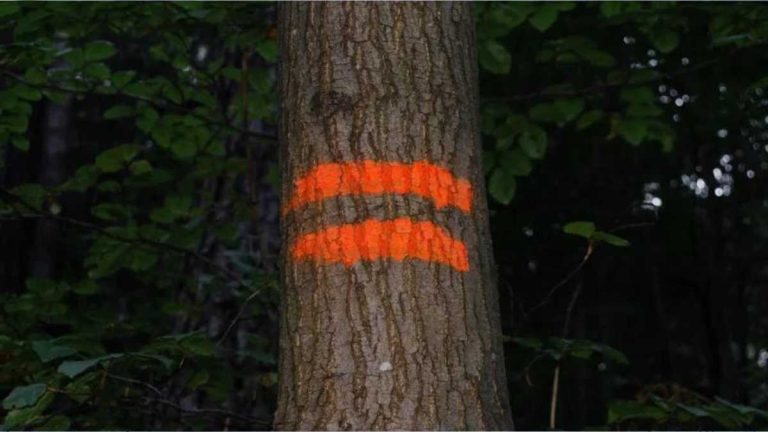What does it mean when you see a tree painted orange?
Entering a forest can be a disconcerting experience, especially for those who are not used to the subtle language written in splashes of color on the trees. For ordinary people like us, stumbling upon a tree painted orange, for example, can be unsettling and raise questions about the purpose of these enigmatic inscriptions. However, understanding the meaning of these colors can turn a confusing forest into an informative guide. Depending on the area or state, a single horizontal orange line or dot (sometimes at the base of a tree) may mean that the marked tree should be cut down or set aside for harvest. Basically, this is a message to those who know that this particular tree is intended to be used as part of sustainable forestry, where selected trees are harvested to maintain a healthy and balanced forest ecosystem.
An orange (or pink) marker can also warn people to leave the tree alone. However, if you see two horizontal orange lines (sometimes red), that can also mean the boundary of the harvest zone, according to Hunters Land Management. These painted marks, regardless of their color, represent essential communication tools, especially for the target group: foresters, loggers, managers and landowners. But here we must also remember that the choice and marking of colors is arbitrary. For example, in Butte County, California, if you find a tree with “two parallel orange lines and an orange dot at the base,” it means it is dying or already dead.
Understand the variety of tree brands.
There are a variety of colors that you can find in the trees of a forest, each of which conveys a specific message. Blue markings, for example, can guide hikers along designated trails and ensure they traverse the forest safely. A blue mark can also mean that the tree needs to be cut down. However, a horizontal blue line, ring, or single blue dot can also indicate that the tree should be left as is. Red markers not only indicate harvest limits, but may also indicate that the property is owned by the Forest Service and you are violating harvest limits. Then it’s time to go.
It is important to note that there is no universal standard for these colors and symbols. Different forestry departments, landowners and logging companies can adopt their own unique code tailored to their specific needs and practices. This diversity underlines the adaptability of these marking systems to the specific requirements of different regions and interest groups.
Not only will you be able to see tree prints in the forest, but you will also be able to see some in your city. Tree marking also serves different purposes in urban and suburban settings. You can use colored dots, bands, or lines to display a variety of information, such as: B. Trees requiring pruning or other specific care, historically important or valuable trees, damaged trees, or trees scheduled for removal.
Importance of tree marking systems.
The development of these signaling systems is based on the need for effective forest management. Landowners, timber companies, and agencies like the Forest Service all play a role in carefully orchestrating sustainable forestry. Marks serve as a means of communication between stakeholders and ensure that collecting, preservation and recreation activities run smoothly.
For landowners, these markers provide a strategic tool to manage their property, direct selective harvesting, and promote overall forest health. Forestry company employees rely on these codes to ensure efficient operations and minimize waste and environmental impact. The U.S. Forest Service uses them to balance protection and use and ensure forests remain resilient and productive. Essentially, the language of colorful markings on trees reflects the collective effort invested in maintaining the delicate balance between humans and nature in our country’s forests. Understanding this coded language transforms a seemingly confusing forest into a harmonious carpet of sustainable coexistence.






